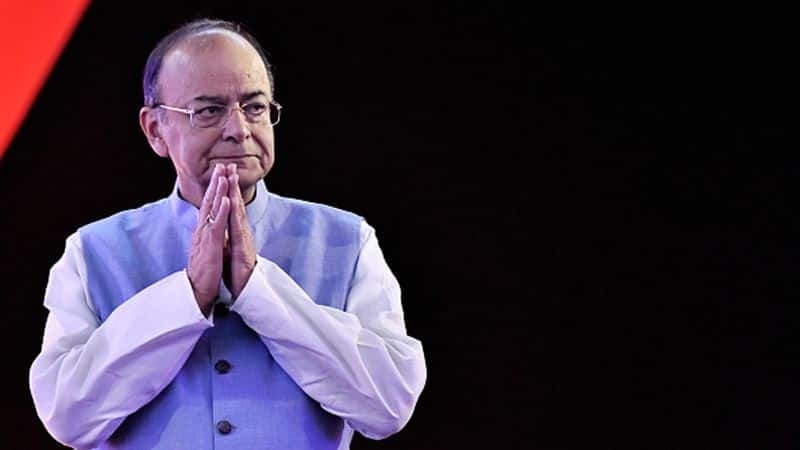In his blog, the finance minister said "confiscation of currency was not the objective, but getting it into the formal economy and making the holders pay tax was the broader objective
New Delhi: Finance Minister Arun Jaitley defended NDA government’s decision to bring in the demonetisation two years back. He wrote in his blog that demonetisation is a key step in a chain of important decisions taken by the Government to formalise the economy.
On this day in 2016, demonetisation of all Rs 500 and Rs 1000 banknotes of the Mahatma Gandhi Series was announced by the Narendra Modi government. It was also announced that new Rs 500 and Rs 2000 banknotes will be issued in exchange for the demonetised banknotes.
Some important points Jaitley highlighted were:
1. Black money
The NDA government first targeted the black money outside India. Under which, asset holders were asked to bring this money back on payment of penal tax. Those who failed are being prosecuted under the Black Money Act. Details of all accounts and assets abroad which have reached the Government, resulted in action against the violators.
2. Greater tax base
Jaitley said technology helped the government in expanding the tax base and was used to file both direct and indirect taxes. "The impact of demonitisation has been felt on collection of personal income tax. Its collections were higher in Financial Year 2018-19 (till 31-10-2018) compared to the previous year by 20.2%. Even in the corporate tax the collections are 19.5% higher. From two years prior to demonitisation, direct tax collections have increased 6.6% and 9% respectively. In the next two years, post demonitisation the increase by 14.6% (part of the year before impact of demonitisation in 2016-17) and an increase of 18% in the year 2017-18," Jaitley wrote.
3. Financial inclusion
Demonetisation and financial inclusion helped formalising the base for weaker sections. Jan Dhan Accounts have resulted in most people being connected to the banking system.
4. Cash flow
Jaitley highlighted cash involves anonymity in transactions and can bypass the banking system as enables its possessors to evade tax. Demo compelled holders of cash to deposit the same in the banks. The enormity of cash deposited and identified with the owner resulted in suspected 17.42 lakh account holders from whom the response has been received online through non-invasive method. The violators faced punitive actions.
5. Cashless transaction
He wrote that the Unified Payment Interface (UPI) was launched in 2016 involving real-time payments between two sets of mobile holders. Its transactions have grown from Rs. 0.5 billion in October 2016 to Rs 598 billion in September 2018.
The Bharat Interface for Money (BHIM)is currently used by 1.25 crore people. The value of BHIM transactions has gone up from Rs. 0.02 billion in September 2016 to Rs 70.6 billion in September 2018. The share of BHIM transactions in overall UPI transactions is at about 48% in June 2017.
The RUPAY Card is used both at the Point of Sale (PoS) and for e-commerce. Its transactions have increased from Rs. 8 billion before demonetisation to Rs. 57.3 billion in September 2018 for PoS and from Rs. 3 billion to Rs. 27 billion in e-commerce.
6. Impact on indirect tax
Demonetisation and implementation of the GST curbed cash transactions in a big way, he said. An increase in digital transactions is visible. This formalisation of the economy has led to the taxpayer base increase from 6.4 million in the pre-GST regime to 12 million taxpayers in the post-GST regime.
“With the implementation of GST, there has been a buoyancy to the indirect tax growth in the economy. This has benefited both the Centre and the States. Every state, post-GST, is getting a mandatory 14% increase in the taxation each year. In 2014-15, the indirect tax to GDP ratio was 4.4%. Post-GST it has climbed up by at least 1 percentage point to 5.4%.”
7. Tax collections gone up
Despite an annual income tax relief of Rs. 97,000 crore given to the smaller taxpayers and a Rs. 80,000 crore relief given to the GST assesses tax collections have gone up. He said rates of taxes, both direct and indirect have been reduced, but tax collections have gone up. The tax base has been expanded. GST rates on 334 commodities which were paying an effective 31% tax pre-GST have witnessed a tax reduction.
8. Social welfare programmes
He added that the government has used these resources for better infrastructure creation, social sector, and development of rural India.
“We were able to connect the villages by roads, electricity in every home, 92% coverage for rural sanitation, a successful Awas Yojana, a cooking gas connection in 8 crore poor homes. Ten crore families are covered under Ayushman Bharat, Rs 1,62,000 crore was being spent on subsidised food. We have increased the MSP by 50% and given them a successful Crop Insurance Scheme.”
Economic Affairs Secretary Subhash Chandra Garg said demonetisation and GST reflect long-term vision of the government and its ability to undertake massive structural reforms. Tax filers under both direct and indirect taxes are close to getting doubled. Digital payments have risen sharply and become common place. Fake notes are out, Garg tweeted.
Terming the criticism, that almost the entire cash money got deposited in the banks post demonetisation, as ill-informed, Jaitley said confiscation of currency was not an objective of demonetisation.
Though the list of financial scams of Modi govt is endless, demonetisation was a self inflicted deep wound on Indian economy which even two years later remains a mystery why the country was pushed into such a disaster ?
— Arvind Kejriwal (@ArvindKejriwal) November 8, 2018
Last Updated Nov 8, 2018, 6:48 PM IST











![Salman Khan sets stage on fire for Anant Ambani, Radhika Merchant pre-wedding festivities [WATCH] ATG](https://static-ai.asianetnews.com/images/01hr1hh8y86gvb4kbqgnyhc0w0/whatsapp-image-2024-03-03-at-12-24-37-pm_100x60xt.jpg)
![Pregnant Deepika Padukone dances with Ranveer Singh at Anant Ambani, Radhika Merchant pre-wedding bash [WATCH] ATG](https://static-ai.asianetnews.com/images/01hr1ffyd3nzqzgm6ba0k87vr8/whatsapp-image-2024-03-03-at-11-45-35-am_100x60xt.jpg)



